Results
Morphology GA
Using the parameters defined in Table 2, the GA was able to find, by the 6th generation, a morphology that could self-replicate. After 50 generations, the population contained 32 morphologies that could self-replicate, although some of them are duplicates.
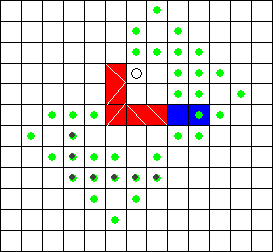
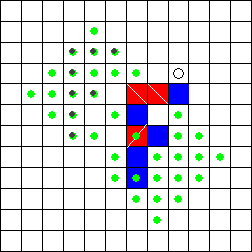
(a)
(b)
Two sample morphologies that can theoretically self-replicate. The green dots are the locations reachable by an end-effector while the black dots are where the copy of the model fits in the reachable area. The blocks closest to the Origin (shown by the hollow circle) are the oldest blocks. a) This is the first morphology found by the GA.
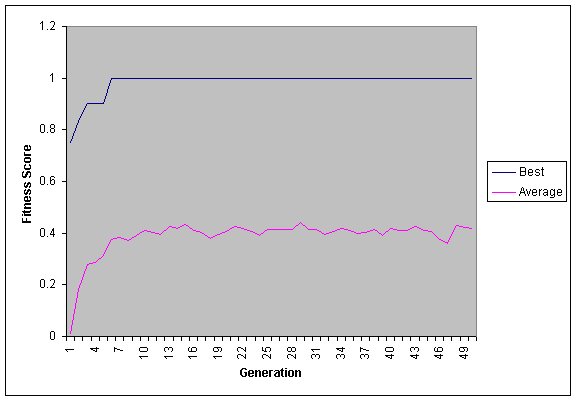
Progression of the fitness value over generations simulated for the morphology GA. Notice that the population stabilizes very quickly.
Command Sequence GA
This GA was applied the F-shaped model and the L-shaped model. The F-model was chosen because I was able to manually determine a sequence of commands resulting in self-replication. The L-model was chosen because I was not able to manually determine a sequence for self-replication as placing blocks limited future movements.
For the L-model, the best solution, with a fitness value of 0.91, appeared in generation 187. The complete command sequence, which causes self-replication but does make a few extraneous movements and has four source locations for blocks, can be seen here. After 300 generations, the population contained 23 command sequences with the maximum fitness. However, the 24th sequence only has a fitness value of 0.72.
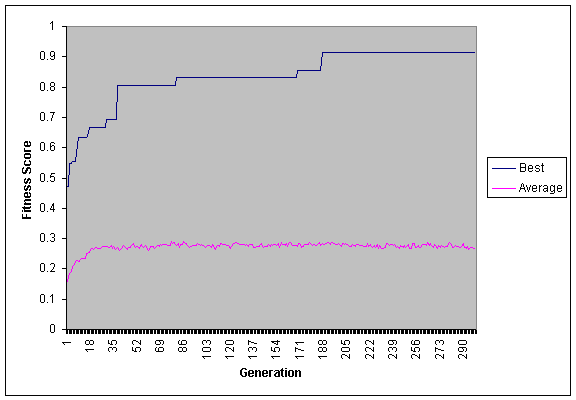
Progression of fitness values over generations simulated for the command sequence to replicate the L-model. Notice that even though the average score over then entire population stabilizes very quickly, the best score slowly progresses.
For the F-model, the best solution, with a fitness of 0.85 emerged in generation 283. This solution successfully produced self-replication using no extraneous blocks and very few pointless commands. Also, it uses seven locations for the source of blocks. The complete sequence can be seen here. After 300 generations, only 3 command sequences had emerged with a fitness of 0.85.
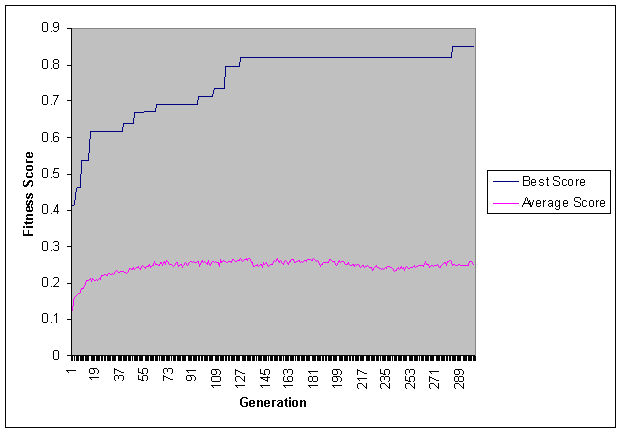
Progression of fitness values over generations simulated for the command sequence to replicate
the F-model. Notice that even though the average score over then entire population stabilizes very quickly, the best score slowly progresses.